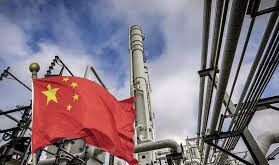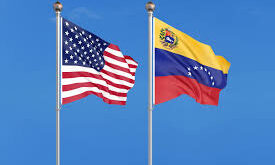Days ahead of the key OPEC+ meeting on June 4, the leading producers in the group, Saudi Arabia and Russia, are at odds about output policy.
Riyadh has grown increasingly frustrated with Russia, which apparently hasn’t kept its end of the deal and isn’t reducing oil production as pledged, complicating the Saudi efforts to lift oil prices to at least the Kingdom’s oil price breakeven level of $81 per barrel.
So, officials from Saudi Arabia have expressed their frustration with Russia and have asked Russian officials that Moscow stick to its pledge to reduce oil production by 500,000 barrels per day (bpd) until the end of the year, sources with knowledge of the matter told The Wall Street Journal.
Russia insists that it is cutting output as planned, but analysts aren’t convinced, and since Moscow has ceased any official reporting about its production levels, the market looks at tanker-tracking data. And the data suggests that even if Russia is following through on its commitment to cut output, its oil supply to international markets is growing, especially in the key Asian markets long dominated by Saudi Arabia and other Middle Eastern producers—China and India.
With cheaper crude, Russia has been aggressively growing its market share in Asia’s top two importers and is now the number one supplier to both China—where it toppled Saudi Arabia from the top spot earlier this year—and India, where Russia is now selling more crude than Iraq and Saudi Arabia combined, per Vortexa data cited by the Journal.
The Saudi frustration makes sense since the Kingdom is not only losing market share in the most important oil-importing region, Asia, but its own 500,000 bpd cuts have failed to lift oil prices, which are now roughly at the level they were before the surprise OPEC+ cuts announced in early April.
For Russia, it makes sense to supply growing volumes to the two top importing countries in Asia, which also have the benefit (for Moscow) of welcoming tankers of the so-called “dark fleet” and not abiding by the G7 price cap on Russian crude of $60 per barrel.
Earlier this month, the International Energy Agency (IEA) said that Russia had failed so far to cut its oil production by 500,000 bpd, and it may even be looking to boost output to compensate for lost revenues.
Russia is also hinting that it would prefer its partners of the OPEC+ group to leave oil production unchanged, as Moscow is okay with the current oil prices and production quotas.
Last week, Russian President Vladimir Putin said that energy prices were approaching “economically justified” levels.
For Saudi Arabia, however, oil below $80 doesn’t appear to be “economically justified.” Hence, Riyadh’s frustration with Moscow regarding the next OPEC+ move.
Saudi Arabia needs oil prices at $80.90 per barrel to balance its budget this year, the International Monetary Fund (IMF) said earlier this month.
Early on Monday, Brent was trading at around $77 per barrel.
Economic advisers have privately told the Saudi rulers in recent months that the Kingdom would need high oil prices over the next five years if its ambitious development projects, including the futuristic NEOM project of $500 billion were to come to light, according to the Journal’s sources.
Last week, before Russia dropped hints that it would prefer OPEC+ to leave production levels as-is, Saudi Arabia’s Energy Minister, Prince Abdulaziz bin Salman, warned traders – again, against shorting oil futures.
Considering that OPEC+ wrong-footed short sellers when it announced the surprise production cut in April, last week’s comments from the most important oil official in the world’s top crude oil exporter shouldn’t be dismissed, analysts say.
“It may be that Saudi Arabia wants to keep traders on their toes but to make these comments and not follow through could be perceived as weak and see prices drift lower again,” Craig Erlam, senior market analyst at OANDA, said late last week.
“Unilateral action may not pack the same punch as a group cut, although you wouldn’t put it past them.”

 Iran Energy News Oil, Gas, Petrochemical and Energy Field Specialized Channel
Iran Energy News Oil, Gas, Petrochemical and Energy Field Specialized Channel



